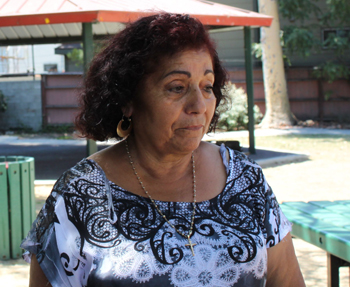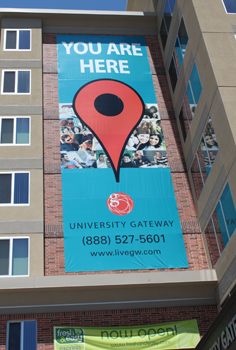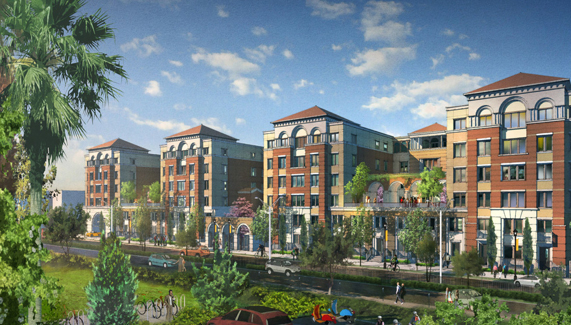
Cutting the ribbon at opening of St. John’s Well Child and Family Center. | Jessica Harrington (Annenberg TV News)
Reporting by Jessica Harrington for Annenberg TV News
The St. John’s Well Child & Family Center at the Lorenzo Housing Complex celebrated its grand opening Thursday March 5. The free clinic on Adams Boulevard near the 110 freeway is open to the community, including those who live at The Lorenzo. The clinic’s opening marked the success of a seven-year effort by the United Neighbors in Defense Against Displacement (UNIDAD) coalition to incorporate the surrounding community into development projects aimed at the college students in the area.
The Lorenzo, which began housing residents in 2013, is a high-end housing project catered towards USC students. The housing developer and various organizations signed the Lorenzo Community Benefits Agreement to ensure the building was inclusive to residents. This facility is part of this plan. It will remain in the same location rent-free for 20 years thanks to a gift from the developer.
The Los Angeles Techincal Trade College has its own St. John’s clinic on campus, but anything that cannot be taken care of at the clinic will be referred to the new facility. The new location is part of a larger movement to to ensure that everyone has access to affordable healthcare in their own community.
Listen to the full story from Annenberg TV News.
Like Intersections on Facebook, follow us on Twitter and sign up for the Newsletter to stay in the loop on news and views from South L.A.









 Juana Osorio is worried about getting pushed out of the neighborhood by the USC Master Plan.
Juana Osorio is worried about getting pushed out of the neighborhood by the USC Master Plan. And they often do pay higher rent. Privately-owned student housing can soar to $4,000/month, which is the case at the Gateway Housing development, located on the corner of Jefferson and Figueroa. Rents for a 2-bedroom apartment are $999 per person if the bedrooms are shared with another occupant. If the rooms are rented privately, the monthly rent is $1,798.
And they often do pay higher rent. Privately-owned student housing can soar to $4,000/month, which is the case at the Gateway Housing development, located on the corner of Jefferson and Figueroa. Rents for a 2-bedroom apartment are $999 per person if the bedrooms are shared with another occupant. If the rooms are rented privately, the monthly rent is $1,798. Jon Samore, co-owner of Vermont Outlet True Value, says USC needs to give the neighborhood more information about its plans.
Jon Samore, co-owner of Vermont Outlet True Value, says USC needs to give the neighborhood more information about its plans.





